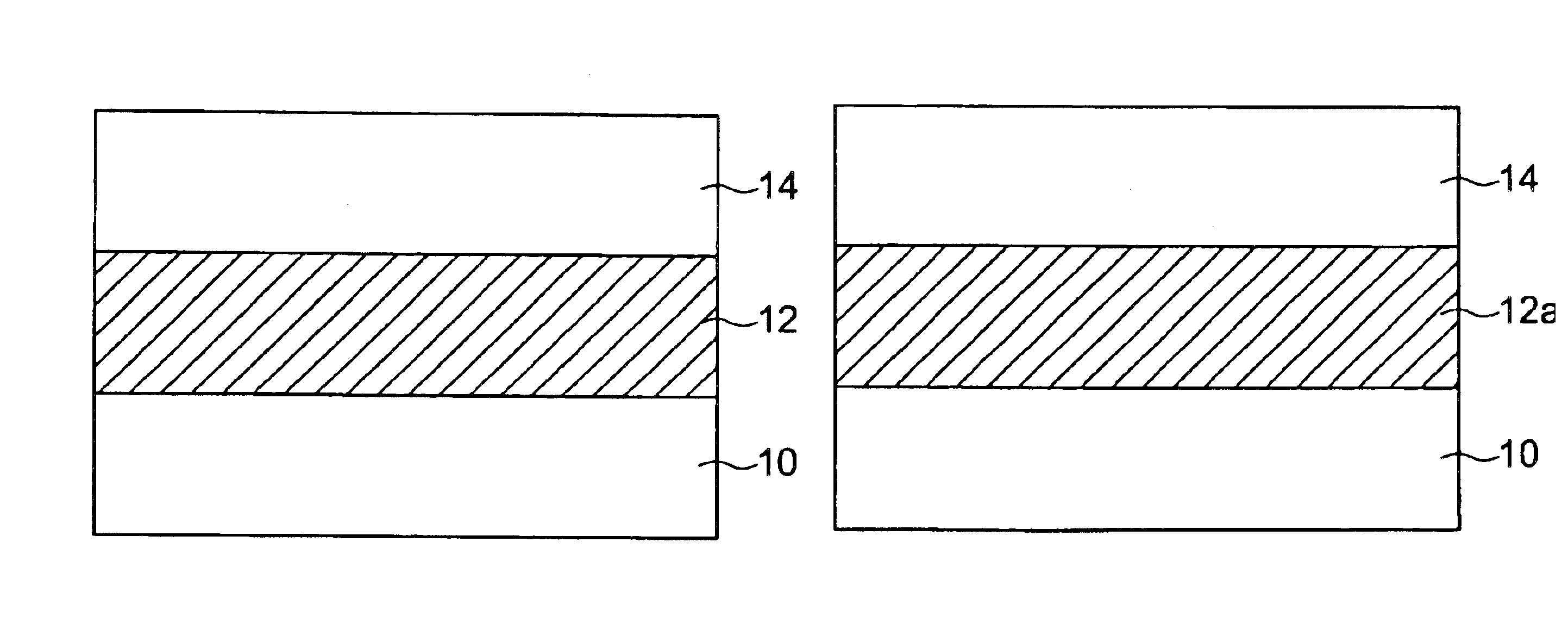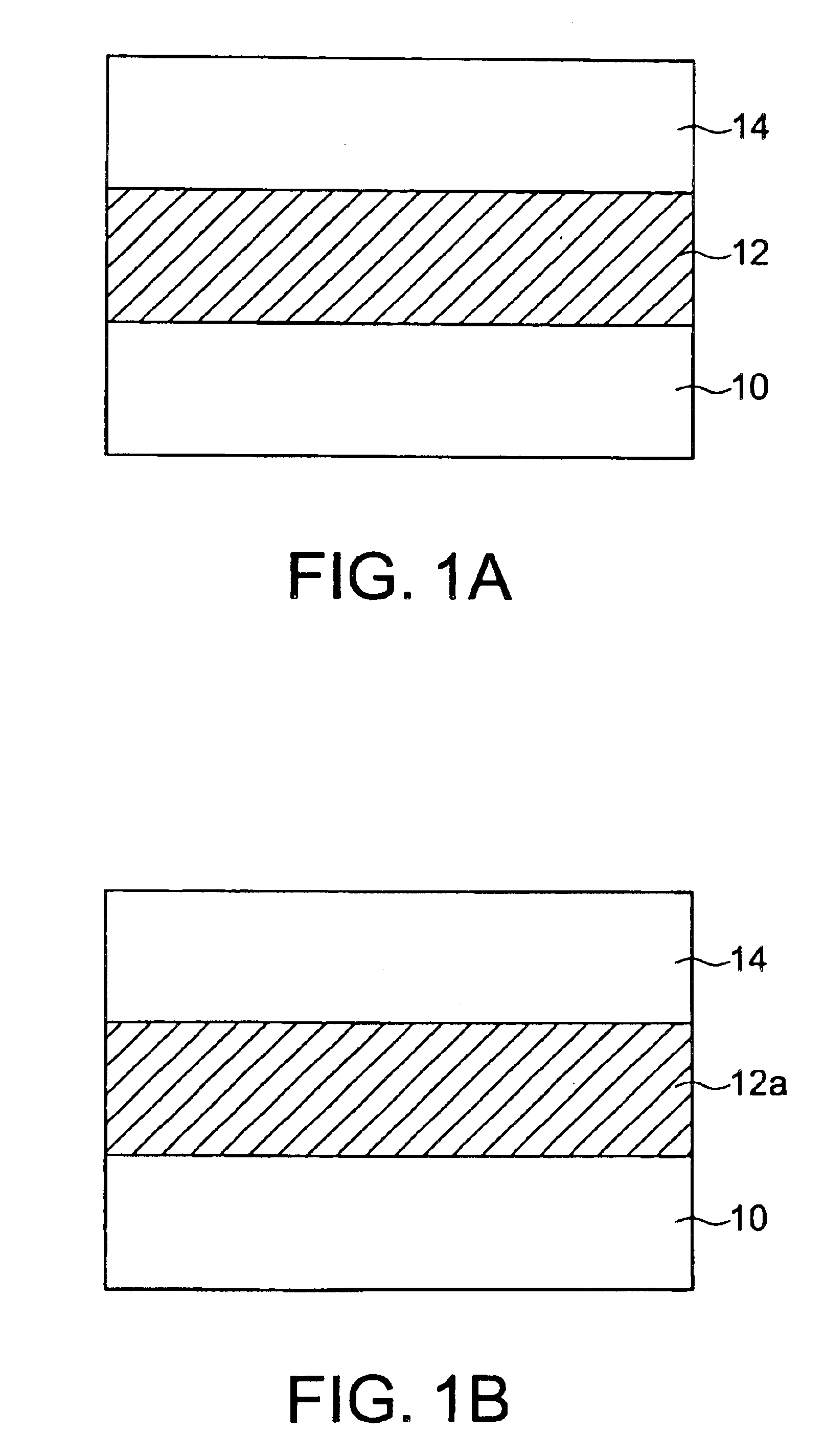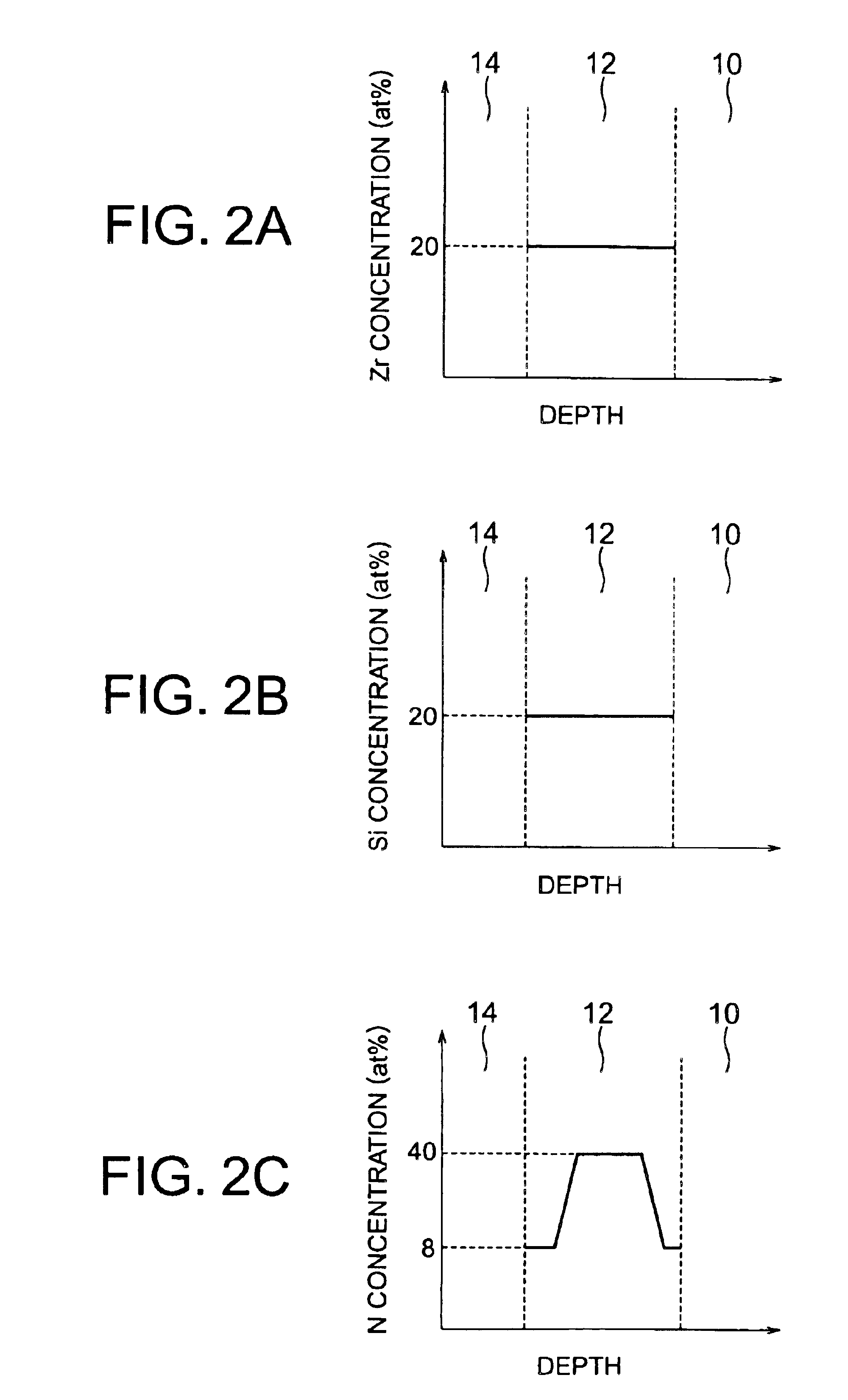Semiconductor device and method of manufacturing the same
a semiconductor and semiconductor technology, applied in vacuum evaporation coatings, chemical vapor deposition coatings, coatings, etc., can solve the problems of increased leakage current flowing from the gate metal to the substrate via the siosub>2 /sub>layer, serious problem, and high-k dielectric materials
- Summary
- Abstract
- Description
- Claims
- Application Information
AI Technical Summary
Benefits of technology
Problems solved by technology
Method used
Image
Examples
first embodiment
(First Embodiment)
FIGS. 1A and 1B are sectional views for explaining a method of manufacturing a MISFET according to a first embodiment of the present invention, and a semiconductor device obtained thereby.
First, as shown in FIG. 1A, a zirconium silicate layer 12, to which nitrogen is doped, is formed on a semiconductor substrate, e.g., a silicon substrate 10, followed by a cap layer 14. The nitrogen-doped zirconium silicate layer 12 is formed of a nitrogen-doped zirconium-silicon compound, and has substantially uniform composition distributions of zirconium and silicon in a depth direction of the layer. The depth direction of the zirconium silicate layer 12 herein means a direction extending from the interface with the cap layer 14 to the interface with the silicon substrate 10.
The cap layer 14 is formed of, e.g., a conductive material such as an impurity-doped polycrystalline silicon.
The composition distributions of the elements in the zirconium silicate layer 12 at this stage wil...
second embodiment
(Second Embodiment)
A method of manufacturing a gate dielectric film of a MISFET according to a second embodiment of the present invention will be described below. FIGS. 5A to 5C are sectional views showing the steps of manufacturing the MISFET of the second embodiment.
First, a semiconductor substrate, e.g., a silicon substrate 10, is prepared, on which element isolation regions (not shown in the drawings) for electrically isolate adjacent devices are formed. Then, a native oxide layer on the surface of the silicon substrate 10 is removed with diluted hydrofluoric (HF) acid solution, and dangling bonds at the surface of the silicon substrate 10 are hydrogen-terminated. Then, a metal silicate layer 12 with a uniform composition is formed on the silicon substrate 10 (FIG. 5A). A zirconium silicate layer having a thickness of 2 nm is an example of such a metal silicate layer. In this case, a zirconium oxide target and a silicon oxide target are used, and sputtering is performed using mi...
third embodiment
(Third Embodiment)
Next, a semiconductor device according to a third embodiment of the present invention will be described with reference to FIGS. 7, 8A, 8B, and 8C. Generally, not only a metal silicate, but also a metal oxide without positively containing silicon can be used as a material of a dielectric film. In the third embodiment, a gate dielectric film formed of such a metal oxide will be described.
FIG. 7 is a sectional view of a laminated structure obtained by first forming a metal oxide layer 34 on a silicon substrate 10, and then forming a conductive cap layer 14 on the metal oxide layer 34. FIGS. 8A, 8B, and 8C schematically show concentration distributions of a metal (e.g., Zr), nitrogen (N), and oxygen (O) in the metal oxide layer 34.
As can be understood from FIG. 8A, the metal concentration in the depth direction in the metal oxide layer 34 is uniform. This means herein that the variations in concentrations are in the range of about 20 % or less.
As can be understood from...
PUM
| Property | Measurement | Unit |
|---|---|---|
| thickness | aaaaa | aaaaa |
| relative dielectric constant | aaaaa | aaaaa |
| temperature | aaaaa | aaaaa |
Abstract
Description
Claims
Application Information
 Login to View More
Login to View More - R&D
- Intellectual Property
- Life Sciences
- Materials
- Tech Scout
- Unparalleled Data Quality
- Higher Quality Content
- 60% Fewer Hallucinations
Browse by: Latest US Patents, China's latest patents, Technical Efficacy Thesaurus, Application Domain, Technology Topic, Popular Technical Reports.
© 2025 PatSnap. All rights reserved.Legal|Privacy policy|Modern Slavery Act Transparency Statement|Sitemap|About US| Contact US: help@patsnap.com



